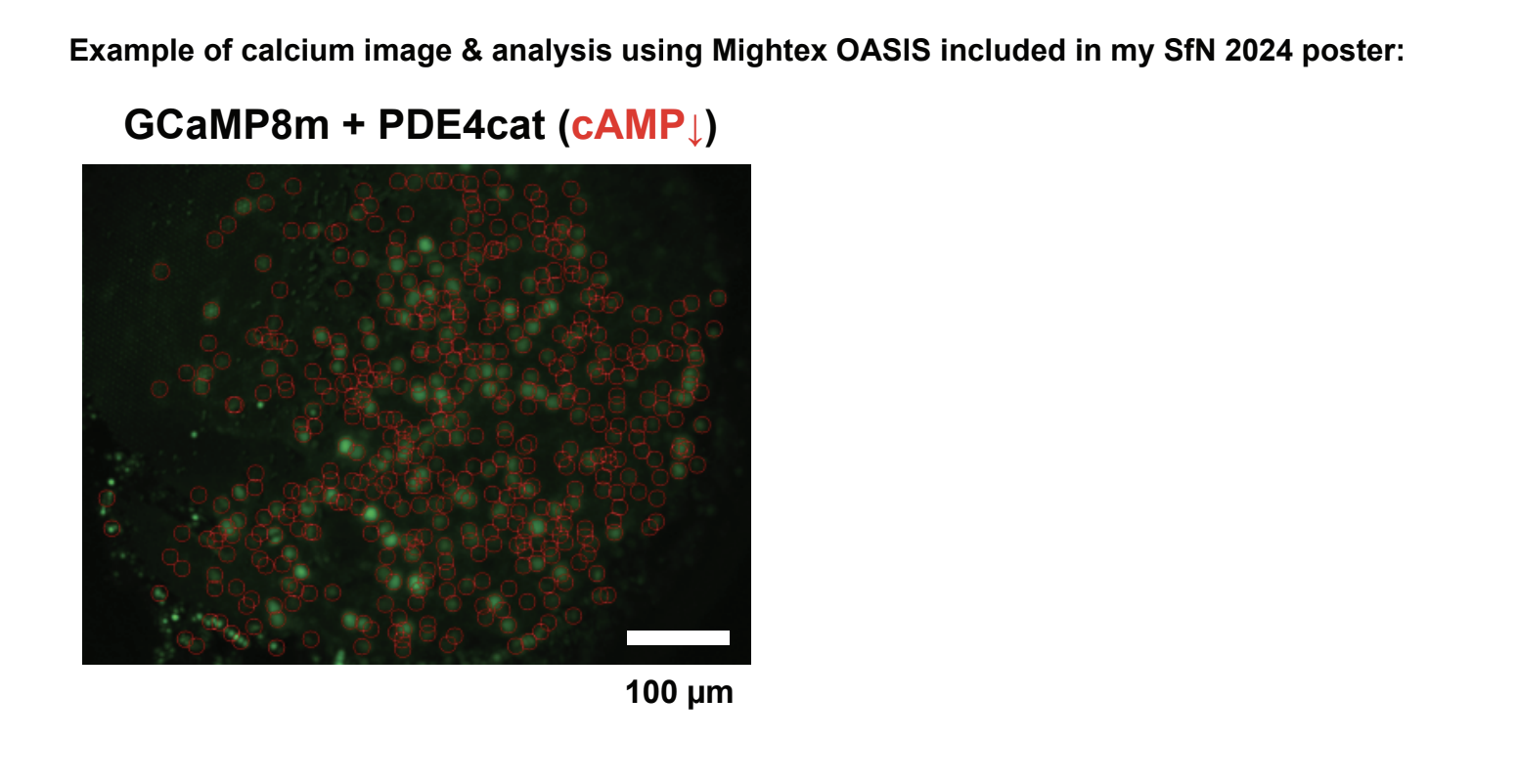Published on 2024/11/05 Research powered by Mightex’s OASIS Implant 

This research was recently presented by Jayant Rai at the Society for Neuroscience (SFN 2024) in Chicago, USA and was supported by a Mightex Travel Award to promote scientific communication and sharing of research using the Mightex OASIS Implant. Congratulations to Jayant Rai! We can’t wait to see more from this exciting project!


The spatiotemporal organization of hippocampal circuit activity is critical for hippocampus-dependent learning and memory. However, the molecular mechanisms underlying the coordination of hippocampal neural activity and their task-related dynamics remain unclear. Here, we investigate the role of cAMP (adenosine 3′,5′-cyclic monophosphate) signaling to regulate CA1 neural activity during hippocampus-dependent short-term (STM) by optogenetic cAMP manipulation and fiber-based calcium imaging in freely-behaving animals. cAMP is a ubiquitous second messenger in various intracellular signaling pathways that mediate sensory transduction and neuromodulation and serves for certain types of synaptic plasticity. We previously reported the spatiotemporal function of cAMP to rapidly enhance synaptic strength and neuronal depolarization in murine hippocampal slices, suggesting that cAMP may not only serve synaptic potentiation but may also regulate neural circuit activity during memory. To test this function, we virally expressed light-sensitive enzymes PAC (Photoactivatable Adenylyl Cyclase) or light activatable Dr-HsPDE4 (Phosphodiesterase 4) in CA1 neurons for light dependent cAMP enhancement or suppression, respectively, by activation of a chronically implanted wireless fiber- optic LED in freely-behaving mice. During object recognition memory tests, we observe a deficit in object memory following cAMP suppression specifically during training, while cAMP enhancement during training promotes STM, indicating a cAMP function that is critical for STM formation. To directly observe the role of cAMP in hippocampal CA1 neural circuit activity during STM formation, we virally coexpress a calcium indicator (GCaMP8m) with cAMP metabolic enzymes, then implanted a GRIN lens coupled with the wireless fiber optic LED by our custom headmount system. We optically recorded activity of CA1 neurons with or without cAMP manipulation by micro-endoscopic calcium imaging in freely-behaving mice during STM tests, then fit a latent space dynamical system model to estimate population dynamics underlying memory task-specific behaviors. We observed that cAMP perturbation disrupts the task-related structure and dynamics in the latent embedding of population activity during STM, which correlates with observed deficit in memory behaviour by cAMP manipulation. Thus, our results reveal that the spatiotemporal cAMP signal is critical for CA1 activity that facilitates hippocampus-dependent memory. We will further discuss our approach to characterize the cAMP mechanism of action to regulate population dynamics during hippocampus-dependent STM and
LTM.


Author: Jayant Rai
Bio: PhD Candidate in the Okamoto Lab at the Lunenfeld-Tanenbaum Research Institute, Canada.




